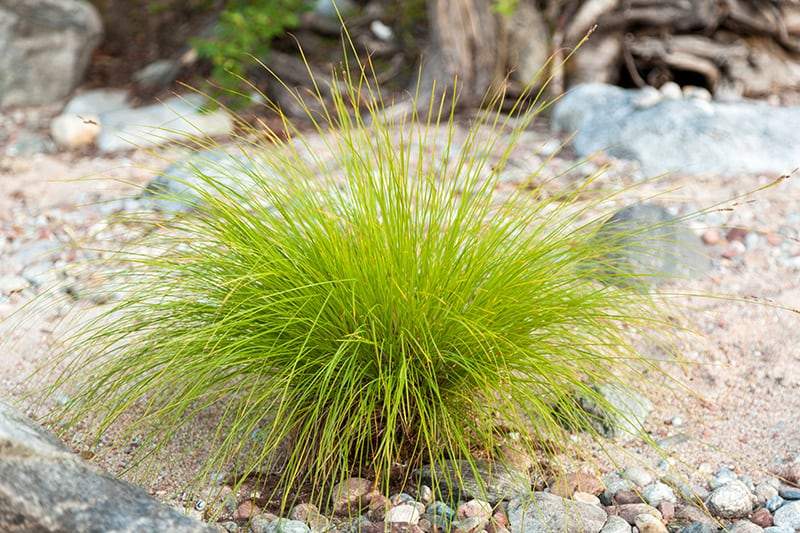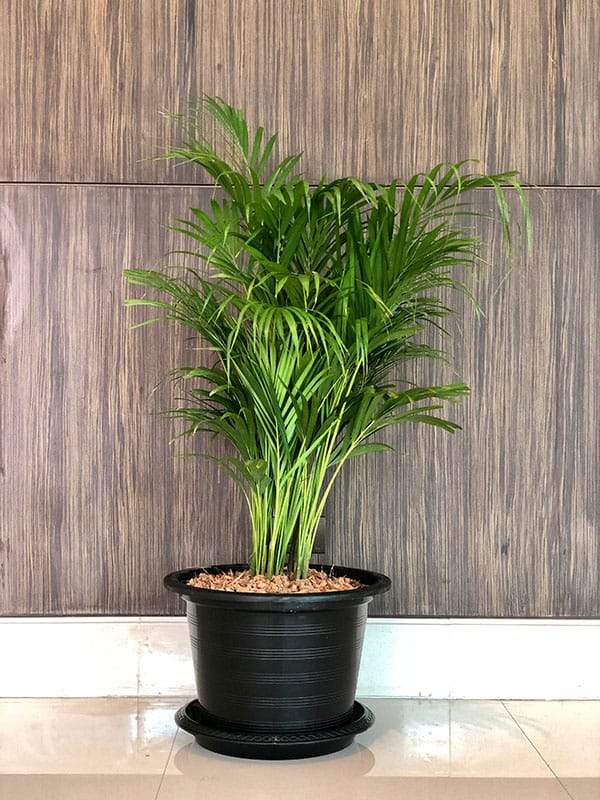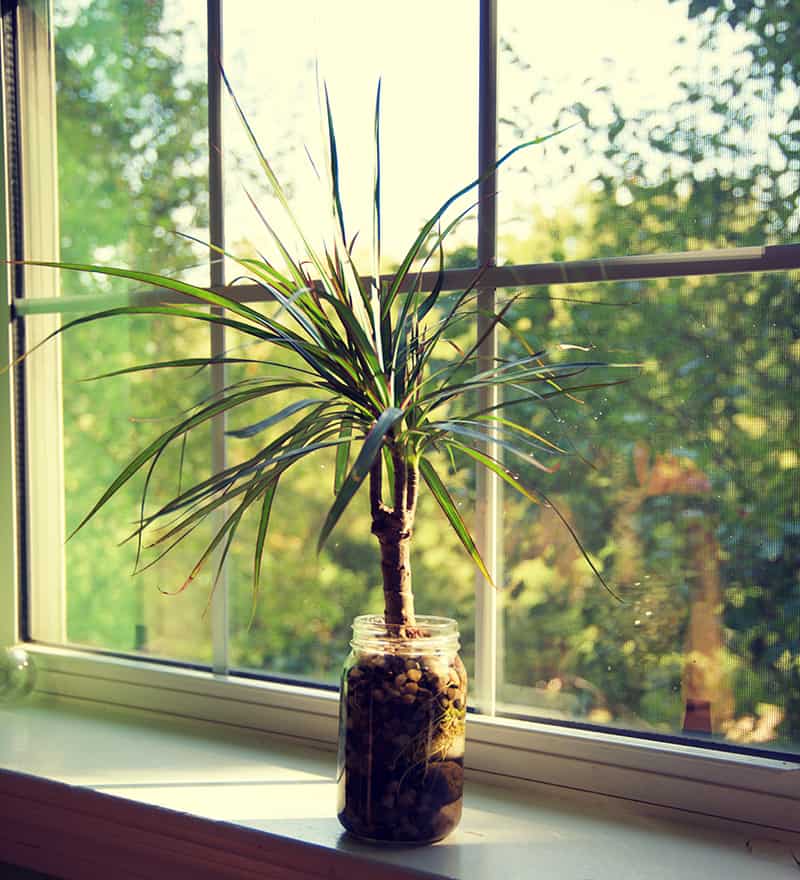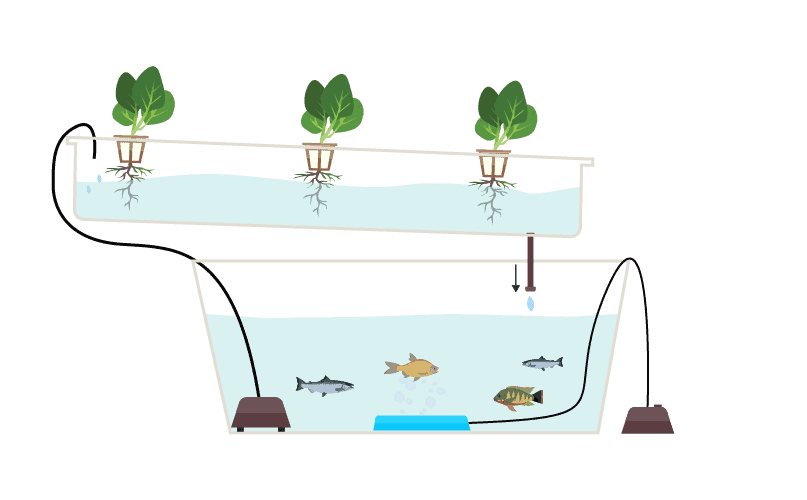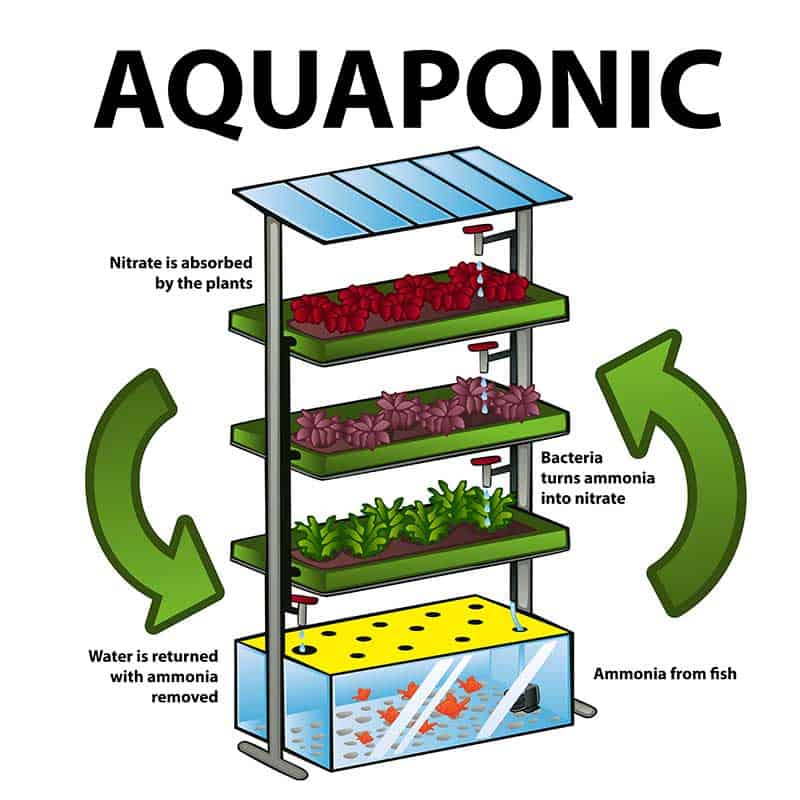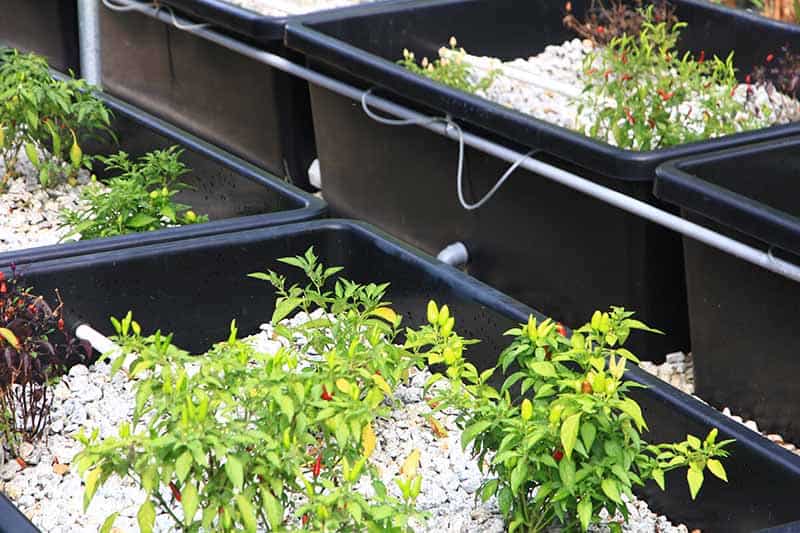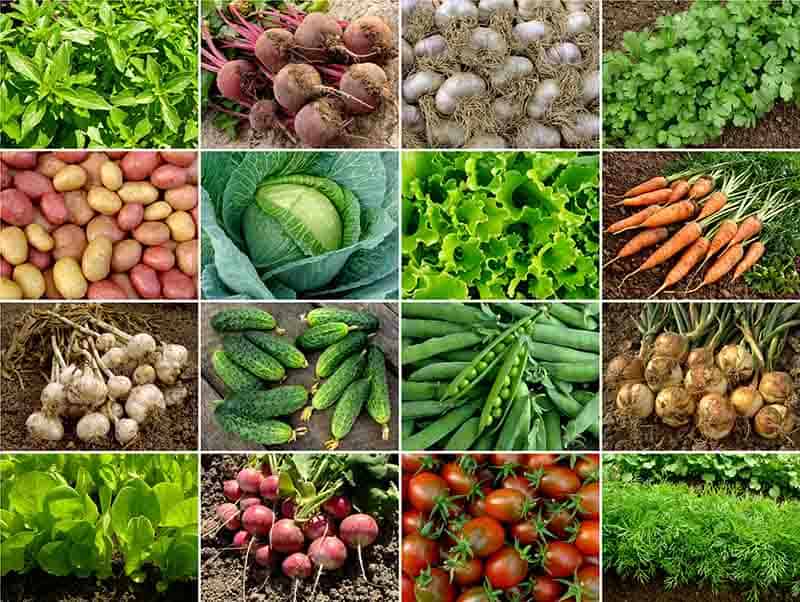If you are no strangers to Hydroponics, you must have known that Hydroponi... Read More
- Hydroponics > Aquaponics >
- A Complete Guide to Aquaponic Gardening
A Complete Guide to Aquaponic Gardening
Related Content
-
Fogponics – How to Grow with Fog
-
The Best Grow Boxes for Hydroponic Growing You Can Buy Today
Bitten by the hydroponics bug? Want to start growing your indoor plants wi... Read More
-
Coconut Coir – What It Is, Varieties, and How to Use It
The growing medium meets soil additive, coconut coir (or coco coir for sho... Read More
-
Advantages & Disadvantages of Hydroponics
Over the last decade, people’s interest in how their food is produced has ... Read More
Explore Our Categories
In this article, you will learn about the basics of aquaponics practice – what is aquaponics, how it works and why it is so special, how had aquaponics developed through time, what are the biological and chemical mechanisms behind it, and how can an aquaponic system look like.
Let’s dive in into aquaponics.
Table of Contents
CHAPTER 1:
What is Aquaponics?

Essentially, Aquaponics is a merge of aquaculture – fish farming, and hydroponics – growing plants in a water medium, aquaponics brings you the best of both worlds.
Let’s get into more details.
Aquaponics is a bio-integrated system which includes two main elements.
- Aquaculture sub-system, consisting of fish or other animal aquatic cultures.
- Hydroponic sub-system, consisting of hydroponically-grown plants.
These two components interact via the water medium which cycles between them – and that is where the magic of aquaponics happens.
Water containing fish waste provides plants with nutrients needed for their vigorous growth. In return, the plants take up excess nitrogen, providing purified water which goes back into the tank.
To tell the whole story, I have to point out that there is a third crucial living community within an aquaponic system – the microbial community. The beneficial nitrifying bacteria are usually contained within a suitable biofilter.
By combining and connecting these different living communities, you can create a closed, self-sustaining system which can give you diverse plant and animal produce, and a lot of enjoyment while you’re growing it.
To understand aquaponics and the motives behind its development, we should look at the history of the practice.
How Does Aquaponics Work?
The main strength of aquaponics lies in the way it overcomes the drawbacks of both aquaculture and hydroponics. How is that?
Aquaculture is by its very nature heavy on the resources. Growing a large number of fish demands a large body of water which gets saturated with waste and harmful chemicals quickly, demanding big water changes.
On the other side, pure water is quite poor in nutrients, and hydroponically grown plants – especially the crop plants – demand artificial fertilizers in order to grow.
However, one of the nutrients that is highly needed for plant growth – nitrogen – is abundantly present in aquaculture wastewater, along with many secondary elements.
Here is where the perfect synergy of aquaponics happens:
- By producing excrement, fish enrich water with many mineral compounds.
- Water is circulated through a biofilter – essentially a colony of nitrifying bacteria which turn ammonia and nitrites into plant-nurturing nitrates.
- Plants consume excess nitrates and other trace elements and utilize them for vigorous growth.
- Purified (and often oxygenated) water is returned to the fish tank, supplying fish with a healthy medium.
The cycle goes on, producing high yields of both fish and vegetables.
Aquaponic Nitrogen Cycle
As you might have already noticed, beside aquatic animals and plants, there is a third group of organisms which have a key role in aquaponics.
The group in question are the microorganisms, specifically the beneficial nitrifying bacteria which make the nitrogen cycle in the aquaponic system possible. The bacteria-driven nitrogen process – currently not working) is all the “magic” behind aquaponics’ efficiency.
Why is nitrification so vital for aquaponics? Well, utilizing nitrifying bacteria is a key aspect for successful aquaponic practice for at least two reasons:
- Ammonia and nitrite buildup in water is toxic to fish. Mechanical filtration in fish ponds might remove the decaying sediment, but it can’t filter out microscopic particles or the compounds already dissolved in water. That is the task of biofilters – which contain the needed bacteria.
- Plants need nitrogen for growth. While they are able to use both ammonia and nitrates to perform their growth processes to a certain extent, nitrates are more desirable as they are easily assimilated by their roots, and are “user-friendly” to all types of plants.
History of Aquaponics
Flooding river plains were known for their fertility since the dawn of agriculture. The biggest and most productive human settlements had developed in the floodplains of great rivers, for example, the mud-rich delta of river Nile.
Naturally, people started noticing and studying the mechanics behind the phenomenon, and in time they had learned to utilize it for controlled production.
The earliest traces of activity similar to aquaponics are found in the Aztec (Source) civilization (1000 AD). Crops were grown on the surface of the raft-like islands which floated in lake shallow in the early days of the system and later in within special canals. Nutrient-rich water, waste and mud were used to irrigate and fertilize the crops on the islands. The system was known as “Chinampas”.
A completely separate branch of aquaponics developed in Asia. The large surfaces under the region’s main crop – rice and rice puddles had made a good foundation for aquaponic development.
Although the foundation is the same, contemporary aquaponic practise differs greatly from these early systems.
Some highlights from the history of modern 20th-century aquaponics include the following:
- In 1969, John Todd, Nancy Todd and William McLarney founded the New Alchemy Institute whose main project was to create a solar-powered, self-sufficient shelter. Besides shelter itself, “The Ark” was designed to provide for the year-round needs of a family of four using holistic methods to provide fish, vegetables, and also shelter.
- In the 1970s, Dr James Rakocy and his colleagues at the University of the Virgin Islands did research on using plants as natural filtration system within the fish farm system. The team developed deep water hydroponic grow beds within a large-scale aquaponic system by 1997.
- After a successful experiment in 1978, William M. Lewis and his colleagues concluded that combination of aquaculture, biofiltration and plant fertilization yielded excellent results in tomato growing ( Source ).
- In the 1980’s, Mark McMurtry and Doug Sanders successfully designed the first known closed loop aquaponic system, in which water from fish tanks irrigated cucumbers and tomatoes in grow beds with sand medium – the sand also worked as a bio-filter; the filter water was recirculated into fish tanks.
CHAPTER 2:
Advantages & Disadvantages of Aquaponics

Aquaponic system has many very concrete advantages as a food production system as well as some downsides. Let’s discover the main ones.
Advantages of Aquaponics
Water Use Efficiency
Because of its cyclical nature, aquaponics is extremely efficient when it comes to water usage. For the same amount of produce, an aquaponic farm requires around 2% of water ( source) that the regular farm would use. That is largely due to the fact that water is not lost in evaporation from land.
When compared to standard aquaculture, for the same tilapia yield aquaponic system needs only 1% of water for regular pond culture.
Self-Sustainability and Resilience
One of the main advantages of aquaponics is that you can create a closed system which requires very little outer input – basically, you just have to provide food for the fish and they will in turn create food for your plant cultures.
Also, aquaponics is ideal for personal and family food production since it provides you with both vegetables and quality animal protein. These are the reasons why projects like The New Alchemy Institute “Ark” often use aquaponics as the centerpiece of their food systems.
Local and Global Food Security
Aquaponics might be a part of the solution to the increasing global food demand. By adding aquaculture component to hydroponic plant growing, aquaponics provide much-needed protein from fish, which is at the same time easy to farm. Extreme efficiency of an aquaponic system is also a great advantage in times when pressure to produce more food is big.
Environmental Benefits
Besides water use efficiency, aquaponics has other environmental benefits. There is no need for agricultural land – the negative impacts on soil аre avoided, and no land conversion (deforestation) is needed. There is no pesticide and fertilizer runoff which would pollute the surrounding land and water ecosystems.
Also, many “ecologically dead“ spaces such as warehouses can be turned into viable farms.
The broader benefit in tune with the goals of sustainable development is that local food production provides easy access to healthy foods and enhances the local economy.
Diversifying Your Offer at the Market
The combination of always-fresh fish and leafy vegetables can make you quite an attractive competitor in the farmer’s market, especially with the recent consumer focus on locally and sustainably produced food.
Disadvantages of Aquaponics
As any other man-made system, aquaponic systems too have their drawbacks and current limitations.
While you can experiment with small-scale systems for a relatively small amount of money, starting large-scale commercial production can be costly, with the expenses ranging from 2000 to 10000 US dollars on average according to some sources.
- Aquaponics is power-hungry, especially if you are planning to maintain your production during the winter. Water pumps, lighting and heating all consume a lot of power. Power demands can be met by utilizing an independent home-scale renewable source such as wind or solar.
- Aquaculture component takes up more space and is not as modular as many hydroponics systems. Unlike for example, vertical hydroponic installations, aquaculture component of an aquaponic is voluminous and requires a space of its own. Yet, it is still much more space-efficient than regular aquaculture or agriculture.
- Water quality requires frequent testing and monitoring, and you have to regularly check if all the mechanical parts of the system are in tune and in good shape. You have to monitor your fish for diseases, which are not always easy to spot. In short, a lot of routine controls have to be done often.
- If you are planning on entering the food market, the product placement is still limited to niche or exclusive markets.
CHAPTER 3:
Aquaponic Systems
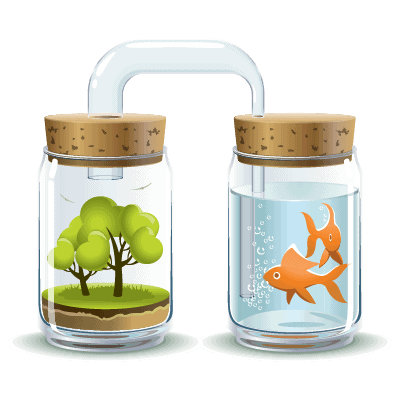
People will never use Aquaponics with the maximum potential without understanding and set it up properly. There are several types of Aquaponic tecniques. Discover them below.
Types of Aquaponic Systems
Types of aquaponic systems can vary in their complexity, type of filtration, and other elements.
The most simple system for home-scale aquaponics would be the sun pond. Sun pond is a fish pond or a tank where the plants are floating (supported) on the water’s surface, with roots beneath the water. If you are raising omnivorous or herbivorous fish, the roots should ideally be physically protected, so the fish wouldn’t damage them. The principle of sun pond resembles the ancient aquaponic technique used by the Aztecs.
A more complex aquaponic systems mostly have five main elements:
- Fish tank
- Plant bed
- Settling basin for solid waste
- Bio-filter for nitrification
- Water pumps for circulating water
Note that the total number of basic elements may vary with the design. As aquaponic has been developed by many independent inventors all over the world, the concepts can vary greatly.
What makes a certain aquaponic setup stand out is the is the hydroponic system within it. Most common production designs and methods for raising crops in hydroponic systems are :
- Media beds
- Floating rafts
- Nutrient film technique (NFT)
- Vertical towers
- Wicking beds
- Dutch buckets
Multiple methods can be combined
It’s interesting that aquaponic systems are still mostly designed by farmers themselves. It is expected that as engineers and professional consultants will play a larger role as aquaponic projects get bigger and more complex, especially the commercial ones.
Further reading
CHAPTER 4:
Aquaponic Fish
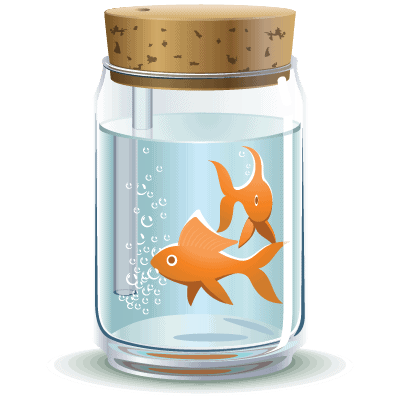
Fishes play a special role in Aquaponics. And probably, that’s the main difference between hydroponics & aquaponics. We’ll dive in.
What Makes A Right Fish?
Not all fish species are suitable for aquaponic culture. The fish need to be able to:
- Thrive in crowded conditions.
- Be resistant to fluctuating dissolved oxygen levels, as well as nitrate saturation and pH fluctuations.
- Be resistant to diseases and parasites.
- Use nutrients efficiently, which leads to rapid growth.
- Be edible or ornamental.
Types of Aquaponic Fish
Here are some fish species that provenly thrive ( source ) in aquaponic setups:
Tilapia
Tilapia is probably the most widely kept aquaponic fish, and has become a synonym for aquaponic aquaculture. What makes it a so well-suited is its medium size, hardiness, good tolerance to a variety of temperatures and water conditions, easy spawning, and neutral, soft meat.
Tilapia are also known for their hearty appetites and fast growth. On a side note – they are also quite good looking fish.
Trout
Trout belongs to the salmon family, and their flesh is highly prized. They are coldwater predators that prefer optimum temperatures around 15 °C, and require high-protein diet and clean water.
Because of their high preference for colder temperatures, they are ideal in cold or temperate climates. Some growers grow trout only during winter months. Note that due to the cool water the choice of plants for growing might be more limited.
The most commonly kept species is the Rainbow trout (Oncorhynchus mykiss).
Catfish
Two species of catfish, Channel catfish (Ictalurus punctatus) and African catfish (Clarias gariepinus) are a great addition to an aquaponic system because of their high tolerance to fluctuating oxygen, nitrite and pH levels, and their resistance to parasites and disease.
These bottom-dwellers will need sinking food, and because they lead static lifestyles lying at the bottom of the tank, they are considered a low-density fish. They can be grown in combination with species which swim in the upper water layers.
Carp
Carp is probably the most widely cultured fish in the world.
In aquaponic setting, all three common species of carp: Common carp (Cyprinus carpio) Silver carp (Hypophthalmichthys molitrix), Grass carp (Ctenopharyngodon idella) can be grown together, because that way they will cover all food niches, providing a better use of food resources and therefore less poorly-dissolvable waste. They can survive in an amazing temperature range (4-34 °C / 39-93 °F), with upper half of the 20s°C (~ 77-84°F) being the preference for fast growth.
Largemouth Bass
Although largemouth bass is more sensitive than Tilapia, it still has a high tolerance for fluctuating dissolved oxygen levels, and resistance to high nitrate levels. Largemouth bass thrives within different temperature ranges which makes it a great year-round fish.
Ornamental fish
Ornamental fish such as koi and goldfish are also a good choice, especially if you are only starting your system and want to test it, in the case you are not keen on using fish as a food source, and there is a market for ornamental and pet fish in your region.
In Australia, commonly grown native species include Barramundi, Silver Perch and Murray Cod.
Invertebrates
Although exclusive invertebrate farming is rare in aquaculture, aquatic invertebrates can be a great addition to a fish tank. For example, prawns consume uneaten fish food, fish waste and other organic material in the tank, helping to support a healthy system and increasing the rate of waste decomposition.
Important note: whatever species of fish you choose to grow, never release any of them into waterways! I would always recommend choosing a fish species native for your region.
CHAPTER 5:
Vegetables to Grow In An Aquaponic System

Another indispensable part of an Aquaponic system is the vegetables. Just like in Hydroponics, there are just some specific types that can thrive in Aquaponics. We’re going to blast through some suggested aquaponic vegetables
The plants that are compatible with hydroponic systems will also be compatible with aquaponic systems in most cases. Leafy green vegetables and herbs are most commonly and most successfully grown. Cucumbers and tomatoes are also frequently grown, but might be a bit too advanced for a beginner.
According to a survey from 2015, most frequently raised plants among larger-scale producers are:
- Basil (Ocimum basilicum)
- Salad greens
- Other herbs
- Tomatoes (Solanum lycopersicum)
- Head lettuce (Lactuca sativa)
- Kale (Brassica oleracea)
- Chard (Beta vulgaris subspecies cicla)
- Bok choi (Brassica rapa spp. chinensis)
- Peppers (Capsicum annuum)
- Cucumbers (Cucumis sativus)
CHAPTER 6:
Nutrients & Biofilter in Aquaponics

All creatures, whether vegetables and fish, will never grow properly without an understanding of nutrients, biofilters and how to use them in the aquaponic system. In this chapter, I’ll give you thorough details about them.
Nutrients
The point of aquaponics is to create a closed-cycle system which doesn’t require you to supplement your plants with fertilizers. Water from the fish tank should be able to provide all the needed nutrients for your hydroponic crops.
In order to understand how aquaponic nutrient flow works, we need to look at the main chemical pillar of aquaponics – the nitrogen cycle.
Nitrogen (N) is a chemical element and a building block of all life forms; it is also a major food source for plants.
One of the major sources of bioavailable nitrogen in nature is the decay of animal waste and metabolites. In natural ecosystems that aquaponic systems are trying to mimic – nothing is wasted.
Animal waste (excrement) is largely made of ammonia (NH3). Other decaying organic matter such as residual food, and dead plants or animals, is also broken down to ammonia by the action of microorganism.
By itself, ammonia is toxic and it is not so bioavailable to plants. That is where a special, naturally occurring group of nitrifying bacteria come into the picture. They belong to genera Nitrosomonas and Nitrobacter, and form colonies in the form of biofilm on the surface of inert materials in the water.
How are nutrients produced during nitrification process?
In aerobic conditions, first the ammonia-oxidizing nitrifying bacteria convert the ammonia into nitrite compounds (NO2). Then, the nitrite-oxidizing bacteria take over and convert them into nitrate compounds (NO3). Plants will then use nitrates with ease.
Also, if there is a need to boost the pH level of your water, a useful side-effect to that might be adding more nutrients. If you use calcium hydroxide and potassium hydroxide to raise pH to the desired neutral level (7.0), you will end up supplementing the water with calcium and potassium, which are the sometimes-deficient elements required for plant growth and good yields.
The whole process of nutrient optimization – from nitrification to pH takes place within the system’s biofilter.
Biofilter
Although the name sounds robust, biofilters are quite simple setups – they consist of a vessel or a tank connected to air pumps, and a kind of substrate that provides as big as possible surface for the growth of nitrifying bacteria. More surface for formation of biofilm means more bacteria, which promises a more efficient nitrification process.
Good biofiltration is the key pillar of chemical stability of your aquaponic system.
Even the medium is quite simple. Media commonly used in the biofilters are sand, gravel, shells or specialized plastic media such as BioBalls.
Since nitrifying bacteria are aerobic, meaning that they require the presence of oxygen to live and grow, having additional aeration within the biofilter is also recommended.
How do biofilters work
Biofiltration happens through three main steps.
- The air pump gets the water out of the the fish tank and into the biofilter.
- Water goes through the nitrification process in the filter.
- Water robbed of unwanted chemicals, but still containing nutrients, is forwarded to plants.
Note that this is a general scheme for typical aquaponic setups, but know that steps may vary depending on the design. In some systems, water arrives to the tank via gravity. Other systems unify filtration with the hydroponic unit, using the hydroponic medium as a habitat for bacteria.
Types of biofilters
The four common types of biofilters are:
- Rotating biological contactors
- Expandable media filters
- Fluidized bed filters
- Packed tower, or trickle, filters
You can buy or order a biofilter, or make one yourself. Homemade biofilters are known to be of a superior quality to that of some commercial submerged pond filters.
Tips for successful biofiltration
The ideal temperature for bacterial growth and productivity is 17–34 °C (63-93 °F). At the same time, this is the temperature comfort zone for many plant and fish species.
The optimum pH for nitrification is 7.0 to 9.0. Coincidentally, neutral pH around 7.0 is a compromise point between needs of plants and needs of the fish in the system.
Ammonia and nitrite levels are routinely tested to check for biofilter’s health and proper function. The amount that can be tolerated will depend on the species of fish you are growing.
Besides fish who need dissolved oxygen (DO) in the water, bacteria need it too. The optimum level of DO for supporting healthy bacterial activity is 4–8 mg/litre.
Bacteria are sensitive to UV light, which is famous as a bactericide. Therefore, your biofilter will need protection from the sunlight, at least until the biofilm is well established.
Conclusion
Hopefully, now you have a basic idea about what aquaponics is, how it works, and how it can benefit hobbyists, food producers, and society as a whole.
Of course, there is still plenty to learn about this diverse practice. You can use this article as an introduction, a foundation and an inspiration for more research.
Since aquaponics has been developed independently and non-commercially for the most part, there are plenty of excellent free resources out there – like this FAO-produced guide for small-scale aquaponics.
If you are more than interested and want to build your own Aquaponics DIY plans at home, you’ll find this post useful.
Resources & Suggested Reading
Small Scale Aquaponic Food Production – FAO UN (pdf)
The Green Center (New Alchemy Institute) Bioshelters
Aquaponics-Integration of hydroponics with aquaculture (pdf)
Recirculating Aquaculture Tank Production Systems: Aquaponics—Integrating Fish and Plant Culture (pdf)
Use of Hydroponics to Maintain Quality of Recirculated Water in a Fish Culture System
Commercial aquaponics production and profitability: Findings from an international survey
The Pros And Cons Of An Aquaponics System
6 Things You Need to Know About Potassium in Aquaponics
Aquaponics, An informational video about Aquaponics by Purdue University (video)
Homemade Biological Pond Filter, Trevor’s Workshop (video)
What Are Bio Balls and Why Are They so Good for Biological Filtration?
